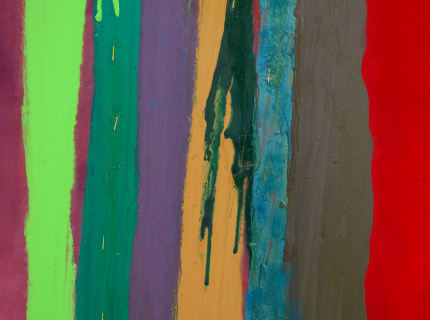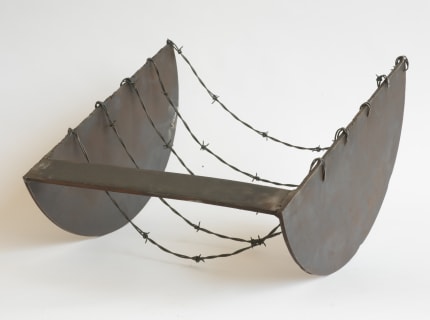This exhibition, “Day for Night: New American Realism,” draws entirely from the private collection of Beirut-based collectors Tony and Elham Salamé, and is presented through their Aïshti Foundation at Palazzo Barberini through September 8th. The Salamés are among the most prolific and esteemed contemporary art collectors in the world, focused primarily on art of the United States. “Day for Night” gives a striking glimpse into their deep holdings, featuring 150 works by major contemporary artists, including Cindy Sherman, Kara Walker, Mark Bradford, Faith Ringgold, Tschabalala Self, and Arthur Jafa, to name a few. Co-curated by the New Museum’s Massimiliano Gioni and Palazzo Barberini’s Flaminia Gennari Santori, the exhibition is a strong survey of contemporary American art, not only serving up boundary-pushing interventions within a birthplace of Baroque art, but also boldly surveying some of the most outspoken American artists working today.
In one room on the ground floor, which Gioni fondly referred to as “the crazy landscape room,” works by Nate Lowman, Matthew Wong, Josh Smith, Shara Hughes, and Sterling Ruby allude to the climate crisis through intense technicolor scenery and depictions of storms and destruction. Nearby, works by Andra Ursuta, Joan Semmel, Sanya Kantarovsky, Richard Prince, and Janiva Ellis offer a “rhapsody about bodies,” as the curator put it. Here, raw and robust depictions of the female form inevitably surface the American contention around women’s bodily autonomy.
“I began exploring the works of artists like Frank Bowling, Peter Bradley, Melvin Edwards, Sam Gilliam, and Jack Whitten, who, in the 1960s and early 1970s, balanced abstraction with political engagement,” Gioni noted. “These Black painters advocated for their right to be formalist and abstract, challenging the notion that their work must illustrate the struggles of the African American community during the Civil Rights Movement.” These rooms also feature Lebanese artists, a clear nod to Salamé’s background, as well as younger generations of Black artists, who also powerfully confront history and politics without illustrating it figuratively.





